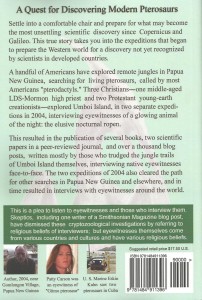I recently watched part of a documentary that appeared to try to convince people that President Franklin D. Roosevelt knew, ahead of time, of the devastating attack on Pearl Harbor. I don’t intend the following to be a deep examination, but only a few observations.
But first, consider the virtue of doubting the worst we hear about another person, holding back negative judgment, at least until we hear from the defense. We need to be objective, especially when somebody’s character is being attacked.
An hour before the first Japanese planes were launched from the decks of aircraft carriers, many miles from the nearest coast of Hawaii, nobody knew how devastating the attack would be. Prior reports indicated that the military forces at Pearl Harbor were not generally on high alert, but nobody could be certain, when that launching commenced, that the Americans would be completely taken by surprise.
Not even the Japanese who trained for that military mission could be sure it would be successful. Everything depended on surprise. Why do we now understand the devastation of that December 7th attack? Hindsight. We can see the photo of giant plume of water shot up from the explosion of a torpedo on the hull of a ship. We can read of the thousands of American lives lost and the many airplanes and ships damaged or destroyed. We can hear the words of those who survived that devastation.
But hindsight should not blind us to the ignorance that everybody lived in right before that attack began. Everybody was ignorant of the devastating attack, one hour before the first planes took off from those carriers.
Japanese losses were comparatively light, with only 29 aircraft lost, compared with 188 American planes destroyed, most of which were sitting on the ground. But things could have gone differently. The weather was getting rough after the second wave of attacks, instead of earlier. Somebody might have alerted the Americans in time for some of those 188 planes to have gotten into the air. The American carriers could have been close enough to have launched an attack on the Japanese carriers. Even some of the ground aircraft might have threatened the Japanese fleet, if the advantage of surprise had been lost.
The point? Even the Japanese did not know for sure that their attack would be devastating, an hour before their planes were launched. So why believe that the president of the United States knew about that devastation, before the attack, when those men on those Japanese ships knew nothing for sure? Franklin D. Roosevelt had no idea that a devastating attack was about to take place.
Of course there’s much more that we can learn from various researchers. But let’s not get carried away with believing President Roosevelt had any sure pre-knowledge of anything related to the Pearl Harbor attack, even if he had access to many bits of evidence. Remember that when we look back at the evidences that the president may have had from advisors, we today have the advantage of looking back at a historic event; he did not.
As an aside, when I was a young man, I worked with a Charlie White, as we maintained the sprinkler systems on the campus of California State University Long Beach. He told me what he experienced during the Pearl Harbor attack.
Charlie was on a small destroyer; as I recall, they were on training out at sea. When they were attacked by a Japanese plane, they replied with live return fire. The pilot gave up the attack and looked for an easier target, or at least a safer target.
.
Nazi Germany Versus 21st Century America Regarding 9-11
How do our present freedoms in the USA compare with the freedoms of citizens of Germany during the rule of Adolf Hitler?









